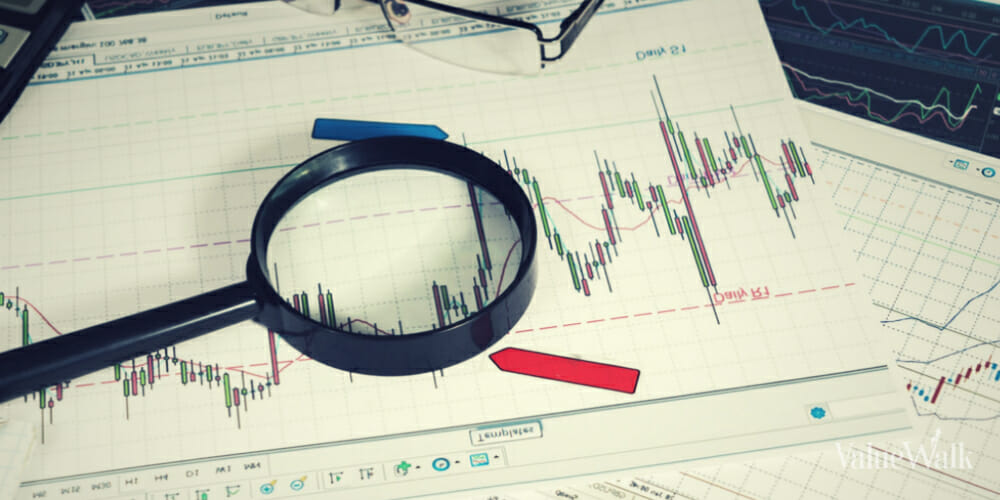Bottom-Line: Gaia has a $6 stock; The company has net cash of $4 per share, owns an unencumbered office building with a market value of $1.35-$1.65 per share and a video-streaming business growing subscribers at 50%-80% per annum. CEO Jirka Rysavy, a serial entrepreneur and the largest GAIA stock holder, has a proven track record of growing small businesses into multi-billion dollar companies. His latest plan is to grow Gaia with cash-on-hand into a business that will generate $2.50 in EPS by 2021 – – and in my opinion, that could translate to at least 100% annualized return for shareholders for the next several years.
My interest in Gaia dates back a few years ago when the company announced the spin off of its video subscription business. Back then, Gaia had an apparel business and a “Netflix-like” video subscription service. The thesis, as I recall it, was that the apparel segment was worth more than the total enterprise value and one was getting the video business for free.
Another thing that had caught my eye was the stockholders list. For a micro-cap company, the top holders included some very prominent and well-respected value funds. So, I did some digging.
During my research, I came across an old Fortune Magazine article about Rysavy. The article described how he started a small office products recycling business, grew it into Corporate Express, a Fortune 500 company, and sold it to a Dutch conglomerate for $2.3 billion. Rysavy also founded Crystal Market which became Wild Oats and was later acquired by Whole Foods. To me, these two data points validated the notion that Rysavy is the real deal.
Fast Forward to the Present:
Earlier this year, Gaia sold its apparel segment to Sequential Brands Group (SQBG) for $167 million and so naturally the spin-off of its video-subscription segment was cancelled. The company used a big chunk of the proceeds from the sale to buyback about 10 million or 40% of its outstanding shares via a tender at $7.75 per share. Rysavy did not sell any of his shares in the tender and is now a 38% shareholder. Since the tender closed, the stock has trailed down to ~$6 on absolutely no new news, thus providing a compelling opportunity IMO to buy an early-stage business with tremendous growth and earnings potential.
Consider this:
Presently, the company has approximately $60 million ($4 per share) in cash, no debt, ownership of an unencumbered office building in Colorado worth $20-$25 million ($1.35-$1.65 per share) and a video streaming business growing subscribers 50%-80% per year. And Rysavy plans to grow subs 80% per annum in 2017 and 2018 and get to one million subscribers by 2019. Now compare that to GAIA’s market cap of $100 million and a stock price of $6 – – it is easy to see why GAIA is ridiculously cheap (easy for me, anyway).
And why is GAIA so cheap? It could be that the funds that owned GAIA can’t be bothered with an even smaller and illiquid micro cap than it had been before the stock buy-back. Or maybe a lot of investors were in it for the spin-off “event” and now see GAIA as a straight forward growth story lacking an “event”.
Another reason for the stock to have traded down over the past couple of months could be a shelf filing dated September 30, 2016, for 5 million shares. This may have spooked ill-informed investors. Upon inquiry, I was told that this filing was done simply to renew an old one that was on file with the SEC. Plus, management had made it clear during the last earnings call that it had sufficient funds on-hand to pay for its growth plan.
On the other hand, it may be simply that the company, due to its size, has little-to-no sell-side following and therefore remains under the radar.
Here’s an excerpt from Q2-2016 conf call:
Jirka Rysavy
Well, today the global OTT market of 218 million video subscribers is large and they have quite significant and growing tailwinds, which is according to the study from Parks Associates which has released this year. Also according to 2015 study completed by Bespoke, streaming is far in a way to prefer method of watching movies. 48% of the survey responded and prefers streaming more than double of those who prefer cable satellite or DVDs.
90% of Gaia content is the available worldwide, which allows us to have subscribers now in 120 countries with the international portion representing 33% of our added some subscribers, which is up from 26% a year ago.
After completion of the tender, Gaia has approximately 15 million shares outstanding. And after the deal, proceeds are kind of finalized is expected to have about $110 million in equity, including over – with over $60 million in cash, plus the ownership of the campus. We expect the subscriber grows will remain about same during the third quarter, and then increased to 50% for full year, and then to accelerate to 80% for next two years.
What is Gaia?
Gaia owns and operates a video subscription service (like Netflix, HBO Go, Amazon Video) with 7,000 programs and videos focused on Yoga, Transformation and Seeking Truth. An annual subscription plan costs around $100 per year.
Approximately 90% of the content is exclusive to Gaia with world-wide rights. So unlike Netflix and Amazon, it doesn’t have to acquire rights for a majority of its content and has full in-house production capabilities. In short, this is a content company.
Subscriber count at the end of Q2-2016 was 170,000, up 45% from Q2-2015. About 33% of subscribers are international. Since the company was planning on spinning off this segment, a lot of information was disclosed on Form 10 (linked here).
But the simplest thing to do would be to download GAIA app on your tablet or smart-phone and check out the content. Or if you have Comcast or Verizon FIOS cable service, search “yoga” and just about every thing that comes up requires a Gaiam TV subscription.
Business Model: In the past, the company has experienced year-over-year subscriber growth of 40% to 100%. However, this was the case when (1) the video segment was part of a larger company with limited resources available to acquire new subs and (2) the company had slowed down marketing expenditure to get this business to profitability ahead of its planned spinoff.
Now with Gaia’s sole focus on growing this business and $60 million of cash on hand, it is quite plausible that the company will be able to accelerate growth.
On September 12, 2016, Gaia filed an 8-K with the SEC. In it, the company attached a short slide presentation, detailing the business economics and its plan for growth for the next five years. Here is a link: http://tinyurl.com/jyby5xm
Using the information contained in this presentation, I have modeled out an income statement for the next five years. One thing that I am confident of is that I will be proven wrong on just about each and every line item of this model. My intent here is not to forecast Gaia’s future earnings with precision but an attempt to see if the company’s goal to generate $2.50 in EPS in 2021 makes sense and roughly when Gaia may turn profitable.
| INCOME STMT | 2013 | 2014 | 2015 | 2016 | 2017 | 2018 | 2019 | 2020 | 2021 |
| Subscribers | 50,000 | 100,000 | 140,000 | 210,000 | 378,000 | 680,400 | 1,020,600 | 1,326,780 | 1,605,404 |
| Y/Y Sub Growth | 100% | 40% | 50% | 80% | 80% | 50% | 30% | 21% | |
| Avg Mth Rev/sub | 9.11 | 8.45 | 8.46 | 8.50 | 8.50 | 8.50 | 8.00 | 8.00 | 8.00 |
| Total Revenues | 5,466 | 10,134 | 14,207 | 21,420 | 38,556 | 69,401 | 97,978 | 127,371 | 154,119 |
| Cost of Revenues | 2,469 | 2,261 | 2,650 | 4,284 | 7,326 | 12,492 | 16,656 | 20,379 | 23,118 |
| Total Gross Profit | 2,097 | 7,873 | 11,557 | 17,136 | 31,230 | 56,909 | 81,321 | 106,992 | 131,001 |
| Gross Margin | 38% | 78% | 81% | 80% | 81% | 82% | 83% | 84% | 85% |
| SG&A | 12,923 | 16,365 | 16,624 | 26,000 | 33,000 | 50,000 | 60,000 | 70,000 | 69,353 |
| As a % of Revs | 236% | 161% | 117% | 121% | 86% | 72% | 61% | 55% | 45% |
| EBIT | (10,826) | (8,492) | (5,067) | (8,864) | (1,770) | 6,909 | 21,321 | 36,992 | 61,648 |
| EBIT Margin | -198% | -84% | -36% | -41% | -5% | 10% | 22% | 29% | 40% |
| Other Expense | 76 | 48 | 53 | – | – | – | – | – | – |
| Pretax Inc (Loss) | (10,902) | (8,540) | (5,120) | (8,864) | (1,770) | 6,909 | 21,321 | 36,992 | 61,648 |
| Income Taxes | (3,439) | (687) | 2,681 | 8,273 | 14,353 | 23,919 | |||
| Tax Rate | 39% | 39% | 39% | 39% | 39% | 39% | |||
| Net Income | (10,902) | (8,540) | (5,120) | (5,425) | (1,083) | 4,228 | 13,049 | 22,639 | 37,728 |
| EPS | (0.72) | (0.57) | (0.34) | (0.36) | (0.07) | 0.28 | 0.86 | 1.50 | 2.50 |
| FD Shares | 15,100 | 15,100 | 15,100 | 15,100 | 15,100 | 15,100 | 15,100 | 15,100 | 15,100 |
Positive EPS seem too far away so why not wait until the company gets closer to turning a profit? First of all, this is just my take on what Gaia’s P&L might look like, not management guidance. According to management, they can generate positive EPS any time they want, it would just mean slowing expenditure on marketing (see slide 16) .
Second, this business has negative working capital requirement with folks paying for an annual subscription upfront and no “inventory”. And the company recognizes revenues and profits over the life of the subscription. Management indicated during an earnings call that it open to further stock buybacks and paying a regular dividend.
(From Q2-2016 earnings call)
[drizzle]Paul Tarell
Well, we talked about internal quite a bit, of course, we probably – first we definitely way through to quarter after we know what we have – you’re right so because there’s still some pending issues. And then we probably – we’re not going to look any people ask what do we do in a new special dividend on other tender, I think the answer for those will be no. I think we will probably put the regular buyback and we’d do it opportunistically. And as we have to operational profitability of the company, we proudly will set some percentage over the cash flow for regular dividends which increase quite a bit as we kind of grow.
And so that would be probably kind of used to maybe for – mean time to do some opportunistic buyback. And then kind of set up the dividends, but dividends wouldn’t use their existing cash flow, just use percentage of free cash flow, because this is for us. We have pretty heavy negative working capital as we get paid everything upfront and there’s no inventory returns or refunds. So – and we have a couple of months to pay vendors. So the free cash flow is pretty nice. So we will plan to use it for probably a dividend unless there is some good opportunity to buy the stock back.
I couldn’t tell you what size of dividend they may pay or timing of such a dividend but my point is: this is a management with more skin in the game than any other shareholder. I expect them to be very focused on increasing shareholder value rather than “empire building”.
Valuation: I don’t know, what do you think? An early stage business in a multi-billion dollar target market that can grow at incredibly high rates over the next several years? Does 15x EPS sound appropriate? That would value the stock close to $40 in the next five years. That’s a return in excess of 100% per year. But look. In the end, this is really all about relying upon management’s past track record, its motivation to add to shareholder value and deciding whether its game plan for growth makes sense. I am sold on it.






